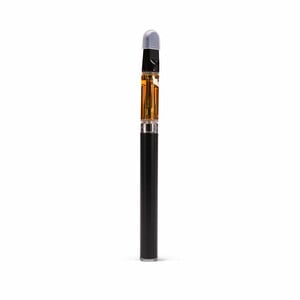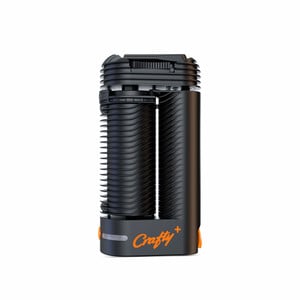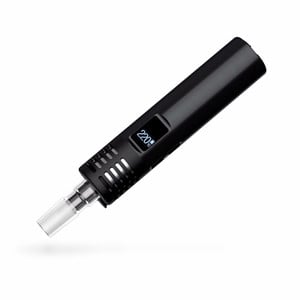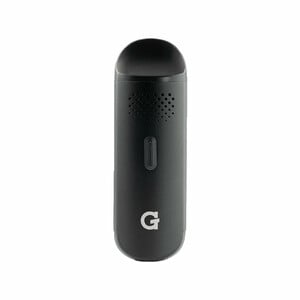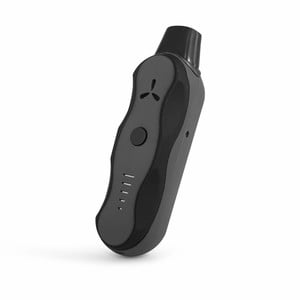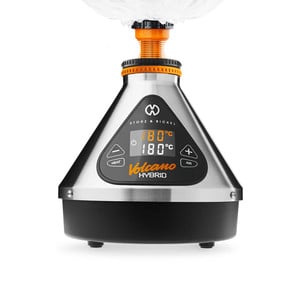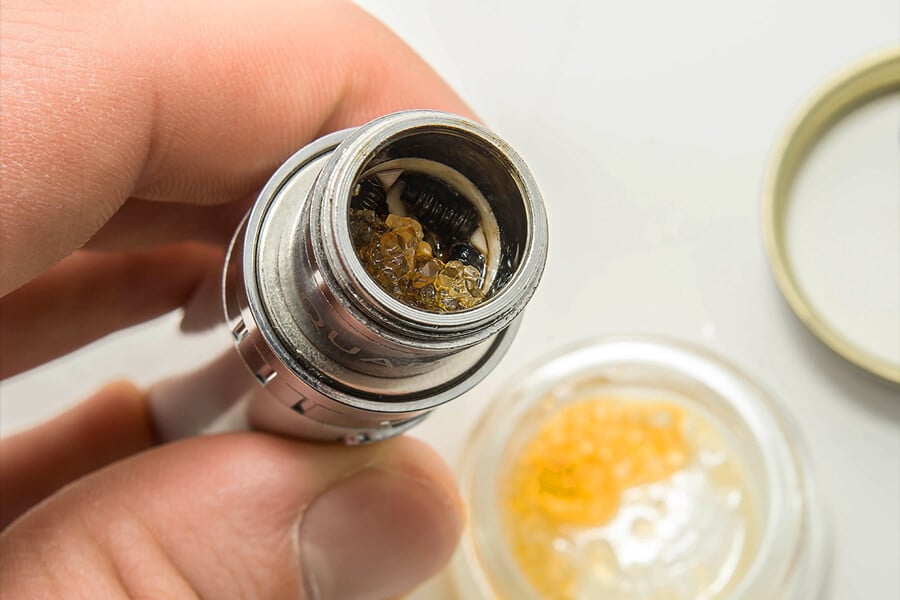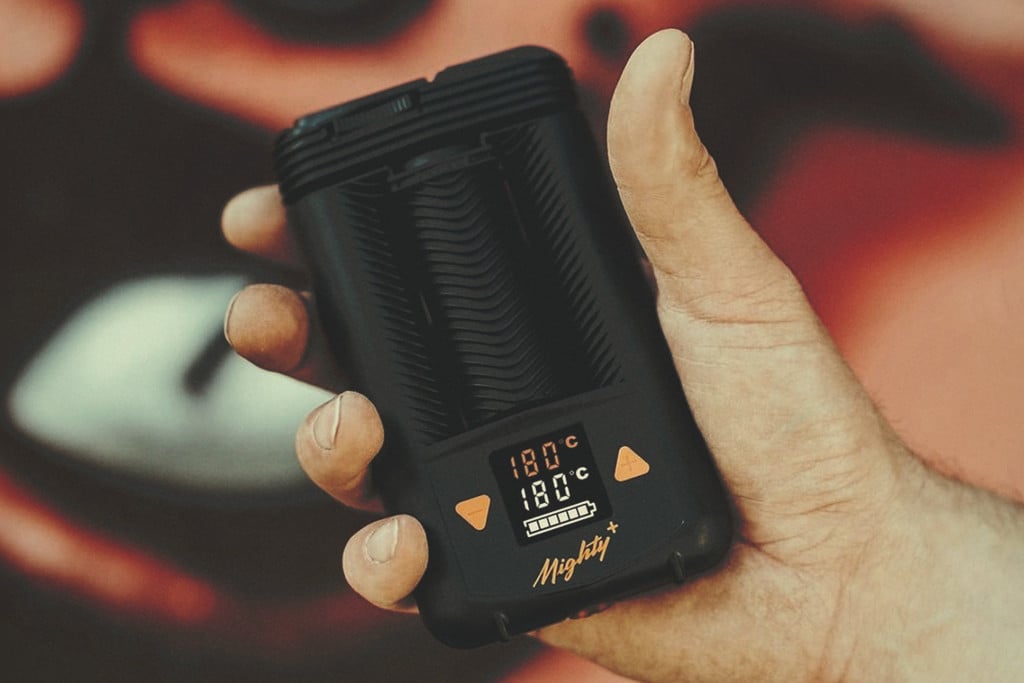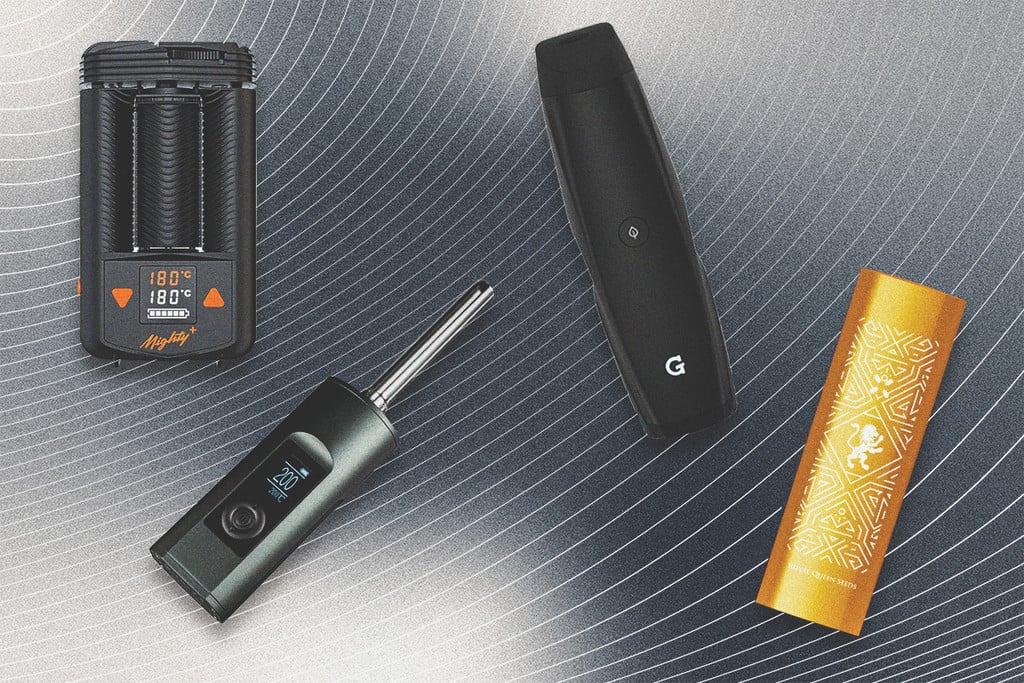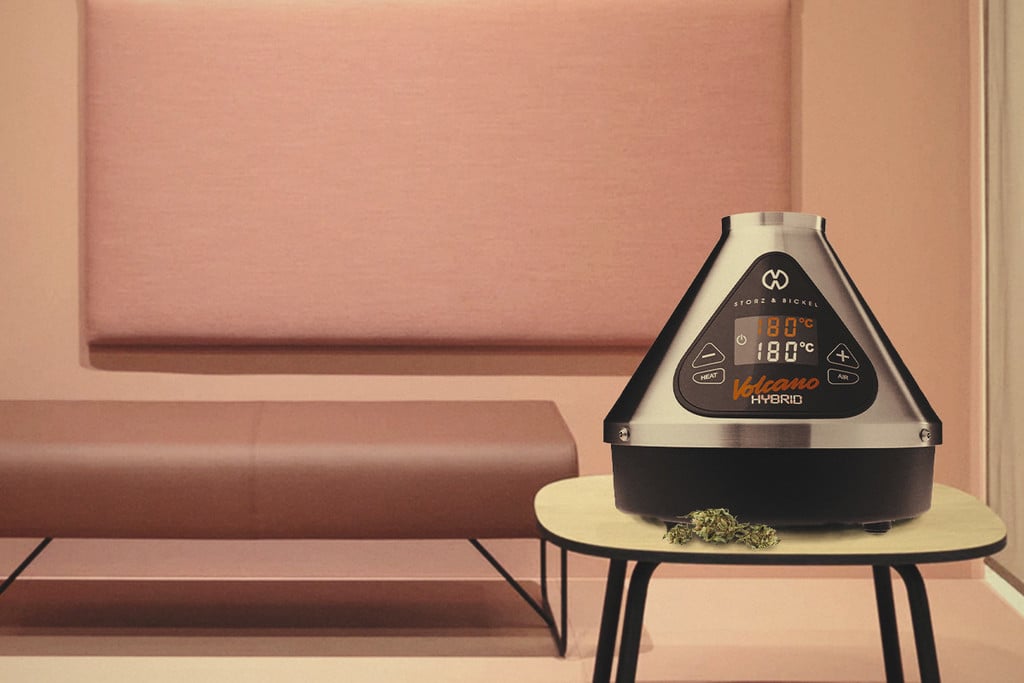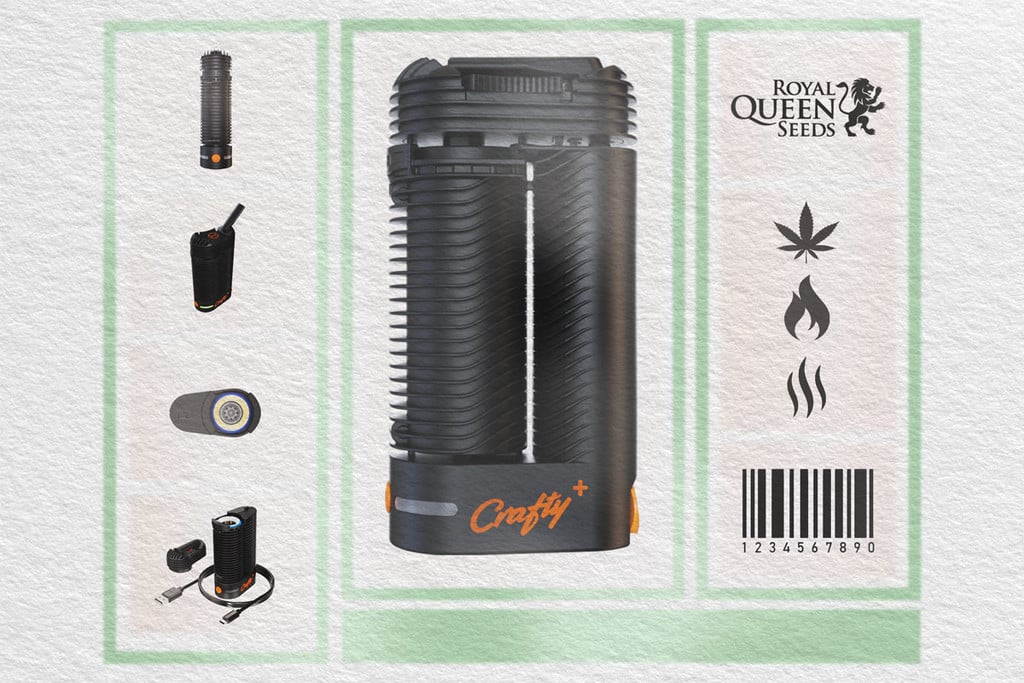.
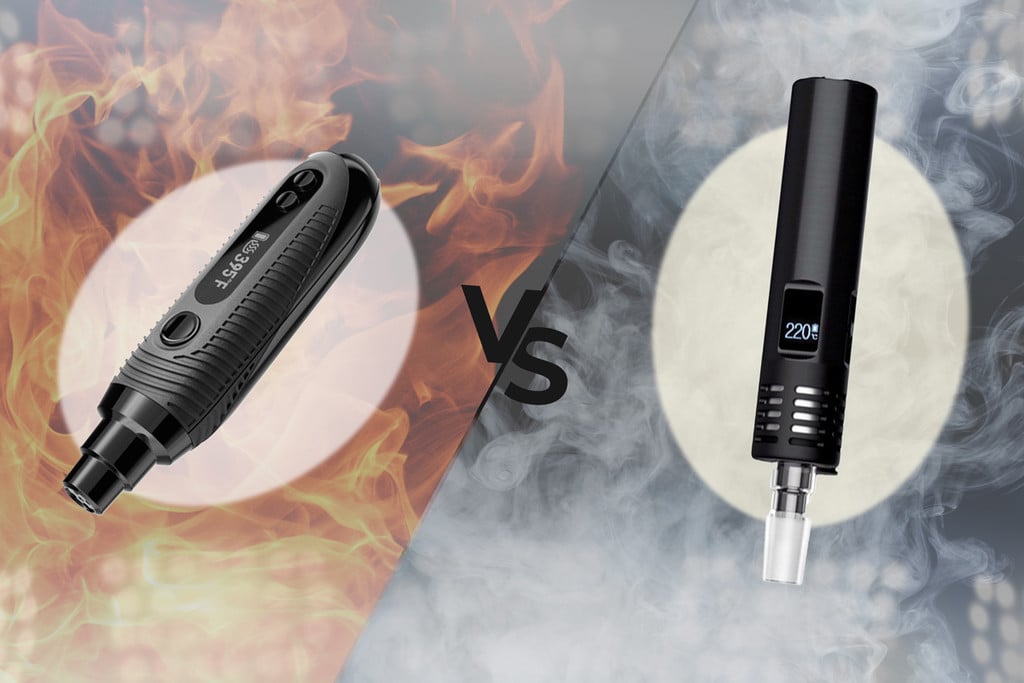
Convection vs Conduction Vaporizers: A Complete Guide
There are plenty of things you need to consider when shopping around for a vape. You've probably thought about portability, heat-up times, and if they are compatible with dry herb or concentrate. But what about the heating system? Find out the key differences between conduction and convection vapes below so you can make an informed decision.
Contents:
Are you looking for your perfect vape? If so, you’ve probably heard the terms “convection” and “conduction” thrown around. But what do these words mean? And how are they different? Below, you’ll discover the differences between convection and conduction heating systems and the pros and cons of each.
What Is a Convection Vaporizer?
Heat travels in three different ways: Conduction, radiation, and convection. As their name implies, convection vaporizers use the latter means of heat transfer to heat up cannabis flowers and turn solid cannabis resin into a gas filled with cannabinoids and terpenes. But how does convection work? Well, you can compare it to a fan oven or an air fryer. These cooking systems don’t place food in direct contact with a heating element. Instead, they use circulating air to push heat away from a heating element towards the food. Convection vaporizers use the same method. Instead of directly heating buds against an element, these devices use air to move heat from a separate element to cannabis flowers.
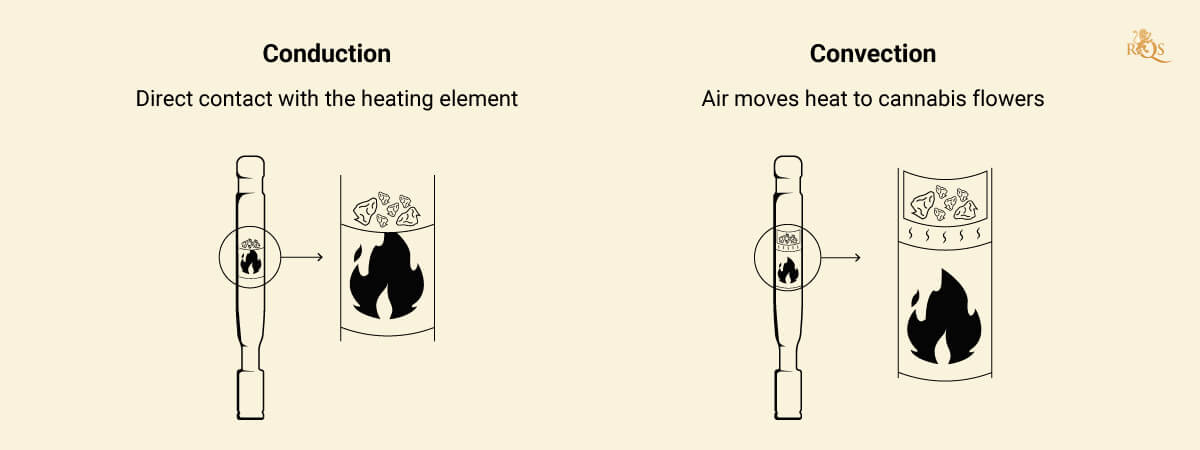
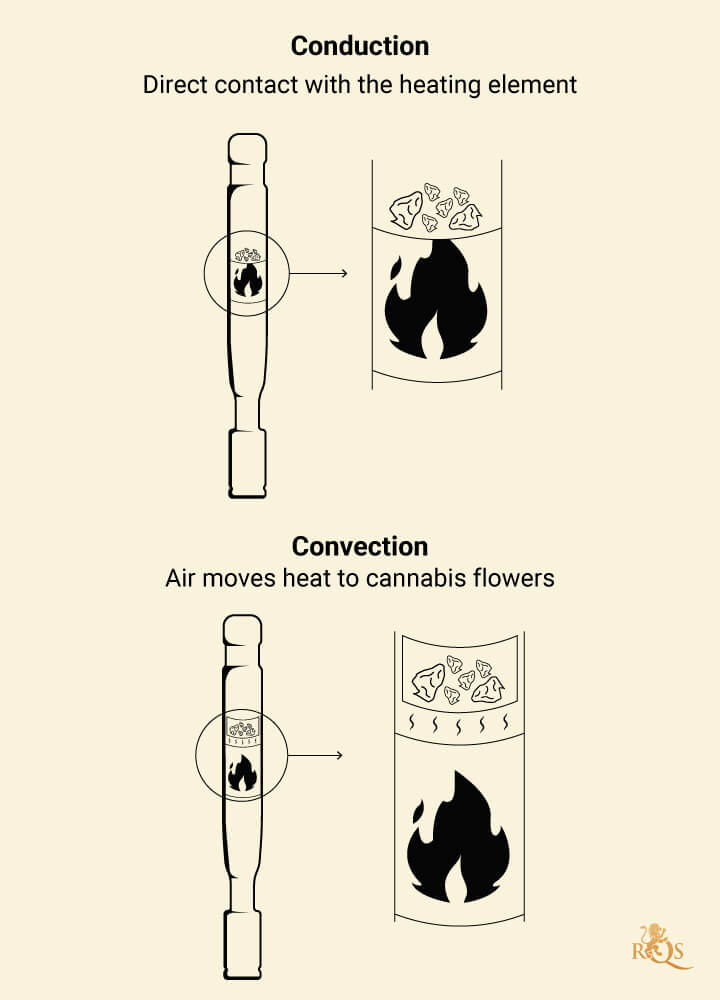
Examples of Convection Vaporizers
Vaporizers took the cannabis world by storm and offered users a completely new way to enjoy their herb. The vape market continues to expand, and new products with unique twists are constantly hitting the shelves. When looking at the cannabis vape timeline, you’ll see that conduction vaporizers came about first. However, convection devices soon surged in popularity and many users prefer vapes that employ this method of heat transfer. Check out two of the most popular convection models below.
CBD Vape Pen
The CBD Vape Pen utilises an advanced heating system that ensures smooth, flavorful draws every time.
Crafty+
Portable, aesthetic, and sturdy, the Crafty+ vaporizer heats up to 0.25g of bud within 60 seconds using a combination of convection and conduction heating. This hybrid approach ensures that the majority of cannabinoids and terpenes are captured from each batch. With a flexible temperature range of 40ºC–120ºC, this device enables users to accurately target the evaporation points of select constituents for a customised experience.
CRAFTY+
|
|
Conduction & Convection |
|
|
11 x 5,7 x 3,3 cm |
|
|
135 gr |
|
|
40ºC - 210ºC / 104ºF - 410ºF |
|
|
60 sec |
|
|
0,25 gr |
|
|
Digital |
|
|
Dry Herbs |
Arizer Air Max
The Arizer Air Max holds the title of a pocket-sized powerhouse. This advanced device fits perfectly into the palm of the hand and will easily slip into most pockets; with a weight of 160g, you’ll barely notice it. This dry herb vape also uses a hybrid heating system consisting of convection and conduction technology. With a heat-up time of less than 60 seconds, you can stay elevated anywhere, instantly.
Arizer Air MAX Vaporizer
|
|
Conduction & Convection |
|
|
12.8 x 3 x 3 cm |
|
|
160 gr |
|
|
122° – 428° F / 50º – 220º C |
|
|
60 sec |
|
|
0,25 gr |
|
|
Manual |
|
|
Dry Herbs |
What Is a Conduction Vaporizer?
Now you’re aware of the nature of convection vapes, but what about those that use conduction? Let’s go back to our cooking analogy. Conduction transmits heat through direct contact with a heating element. You use conduction to cook your food every time you drop ingredients into a hot frying pan. In the context of vapes, this mode of heating cannabis flowers involves direct contact with a heating element to expose buds to high enough temperatures to vaporize cannabinoids and terpenes.
Examples of Conduction Vaporizers
Conduction vaporizers are tried and tested. They arrived earlier on the scene than their convection and hybrid counterparts and instantly became devices of allure to cannabis users across the world. While many vape enthusiasts made the switch to different heating systems, many have remained loyal to conduction devices; many new models continue to hit the shelves.
G Pen Dash Vaporizer
The G Pen Dash Vaporizer uses conduction heating to provide fast and efficient vaporization. Its smart design ensures even heat distribution, delivering smooth, satisfying draws.
G Pen Dash Vaporizer
|
|
Conduction |
|
|
12 x 8 x 3 cm |
|
|
167 gr |
|
|
190-205ºC / 374-401ºF |
|
|
20 sec |
|
|
0.2 gr |
|
|
Digital |
|
|
Dry Herbs |
Airvape XS Go
The Airvape XS Go takes portability to another level. If you like to vape while hiking trails or even walking through built-up places, you can easily conceal this pen-like device with one hand. Using conduction technology, the vaporizer heats up dry herb within 10–30 seconds, depending on the selected settings. On top of efficiency, this model produces thick and smooth vapour that never fails to please.
AirVape XS GO
|
|
Conduction & Convection |
|
|
2.5 x 2.5 x 9 cm |
|
|
56 gr |
|
|
180 - 215ºC / 356 - 420ºF |
|
|
10 - 30 sec |
|
|
0,25 gr |
|
|
Manual |
|
|
Dry Herbs |
Convection vs Conduction Vaporizers: Pros and Cons
Looking for the ideal vape takes some research. To help you secure the perfect device for you, we’re going to break down the key differences between convection and conduction vapes along the lines of temperature control, vapour quality, versatility, and maintenance.
Temperature Control
Temperature control separates good vaporizers from great ones. The ability to control temperature offers users more freedom over their experience. Many models come with ergonomic controls that allow users to easily modify settings within a large temperature scale. However, the type of heating system used can determine how well the settings translate over to what happens in the chamber during heating.
- Conduction: Conduction vaporizers generally have excellent temperature control settings. Many devices enable users to select the temperature, across a large range, within increments of 1ºC. However, the nature of conduction systems means that the inserted herb doesn’t always heat up as evenly as that placed into a convection vape. The herb in direct contact with the heating element reaches a higher temperature, leading to the risk of combustion at higher temp ranges.
- Convection: Much like their conduction counterparts, convection vapes are mostly equipped with accurate temperature controls consisting of buttons and LED displays. However, convection systems are generally better at heating up the contents of the chamber more evenly because hot air surrounds and flows through the contents of the chamber. The lack of direct contact with a heating element also decreases the chances of accidental combustion at higher temps.
Vapour Quality
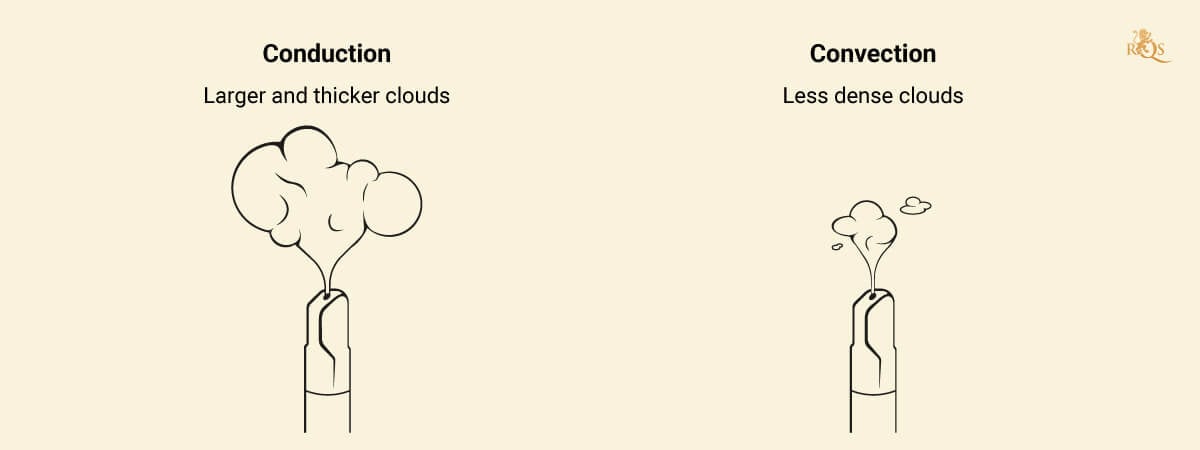
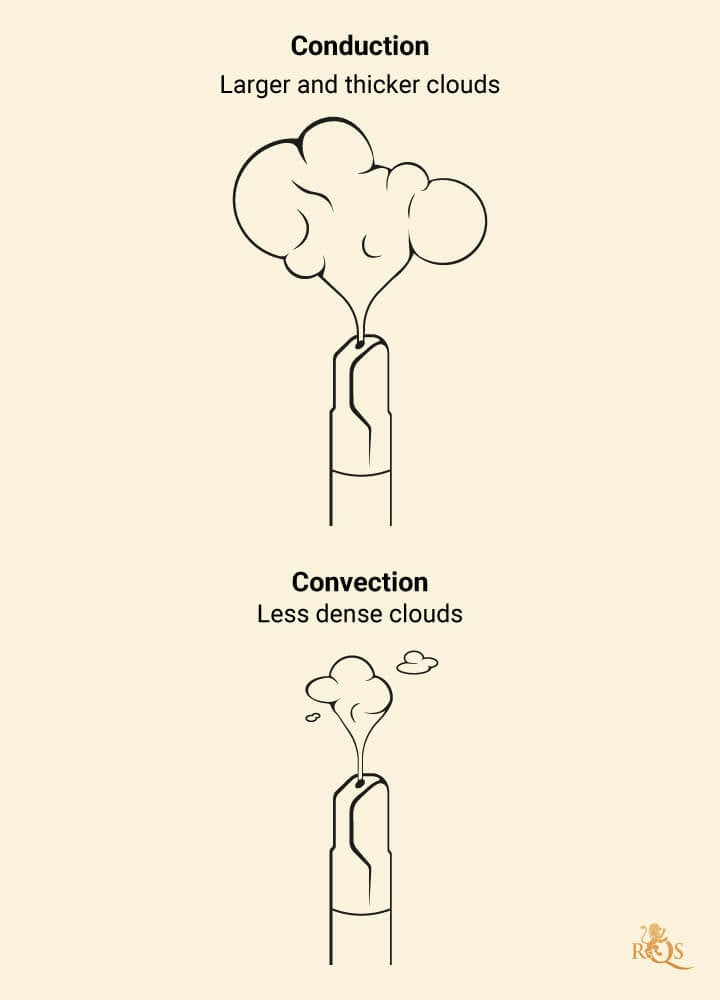
Vapour quality ranks near the top of the list as a desirable trait for most shoppers. Who wants to continuously inhale from a device that produces thin clouds and harsh hits? Vapour quality varies between devices and often correlates positively to price. However, even cheaper models are known to produce good-quality vapour.
- Conduction: Many conduction devices are perfectly capable of producing desirable vapour, hence their popularity! Most noticeably, conduction models tend to produce larger and thicker clouds because buds and concentrates are in direct contact with a heating element. Higher temperatures are even more effective at creating huge puffy clouds. However, the barrier between vaporization and combustion remains thin at these temps. Although the clouds are satisfying, the taste becomes increasingly harsh.
- Convection: Many vape users argue that convection models produce superior vapour quality. The even vaporization that they’re capable of produces soft and silky vapour that rarely irritates the throat. However, convection models often produce less dense clouds, especially when used at lower temperatures; this doesn’t cut it for some vape lovers.
Versatility
Versatility varies between vaporizers. This trait goes beyond the conduction vs convection debate and into the characteristics of each individual vaporizer. For example, some devices are compatible with large glass rigs and smartphone applications, whereas others are far more basic in their design and function.
- Conduction: Conduction vaporizers come in many different forms. The most basic ones don't even use electricity! However, more developed models are highly versatile and feature adaptations that make them compatible with other devices, including bongs. This setup results in extremely smooth and flavourful hits.
- Convection: Convection vapes are equally as versatile. While some feature nothing more than a single button and no display, others are controlled through smartphone apps, possess a multitude of buttons, and allow users to modify almost every aspect. Several convection vapes also work alongside bongs in a versatile manner that allows for a whole new vaping experience.
Maintenance
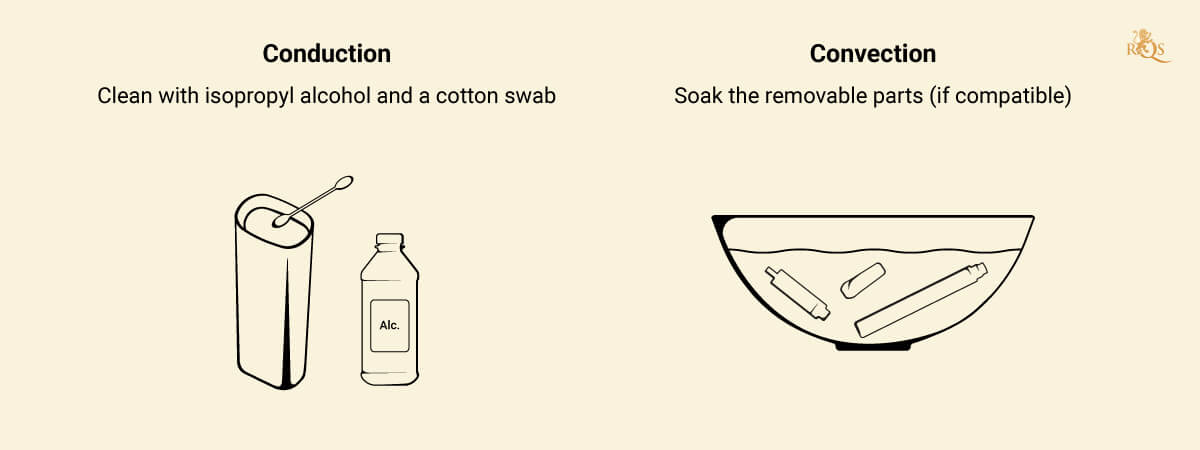
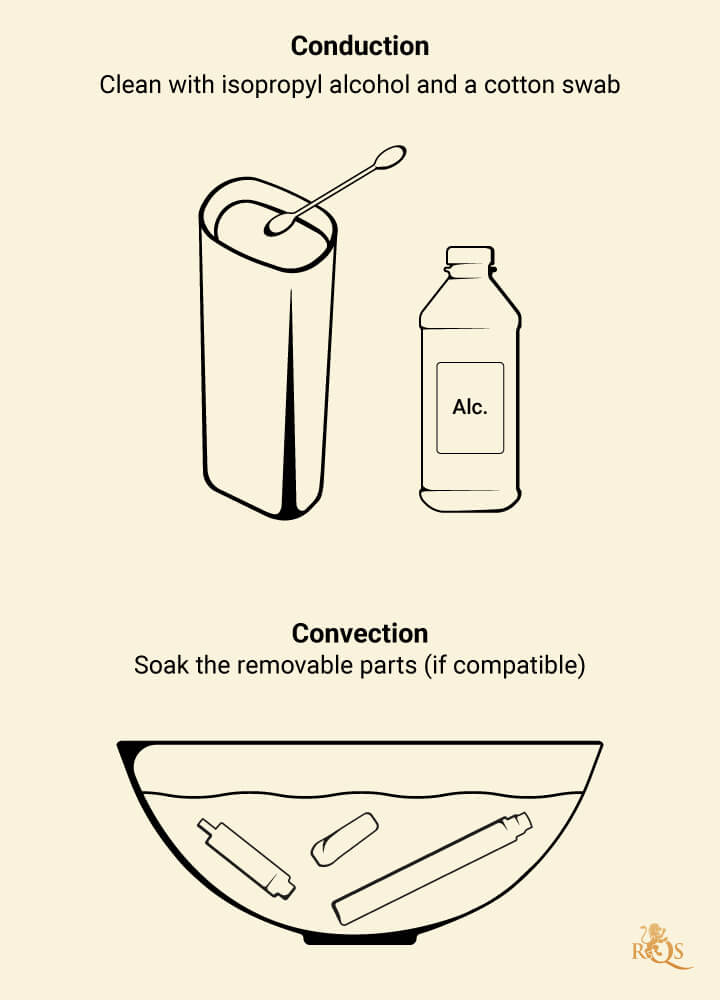
Like bongs and pipes, vapes need cleaning. You don’t have to disassemble them and build them up after every session, but a thorough clean once a week (if you’re a regular user) will help to keep your hits flavourful and extend the lifespan of your trusty device. But are there any cleaning and maintenance differences between conduction and convection vapes? Find out below.
- Conduction: Remember when we spoke about the potential combustion issue with conduction vapes? Well, if you run things too hot for too long, you could run into a cleaning issue. Residue tends to build up around the heating element, meaning this piece of your vape requires quite the scrub down from time to time. However, it’s nothing some isopropyl alcohol and a cotton swab can’t handle.
- Convection: Convection vaporizers are mostly easier to clean because of the lack of contact between the heating element and your weed. However, this doesn’t mean users should get lazy. You still need to disassemble all of the removable parts every now and then to soak them (if compatible) and wipe off residues using isopropyl alcohol.
Cost
Despite all of the cool traits a vaporizer might offer, price often stands as a barrier to entry. Whereas some cannabis users have the cash to splash, others go shopping for vapes on a budget. Check out the common price differences between convection and conduction vapes below.
- Conduction: Conduction vaporizers are generally cheaper. You can pick up a low-cost conduction vape for around 50€. Sure, it’ll lack the core features of more expensive models, but it still gets the job done. In contrast, top-of-the-range conduction vapes will leave you several hundred euros out of pocket.
- Convection: Low-cost convection vapes are mostly more expensive than bottom-shelf conduction vapes. They’re simply more advanced devices that cost more to manufacture. You should expect to pay around 100€ for the cheapest models, and up to several hundred for the best of the best.
Which Vaporizer Should You Choose: Conduction or Convection?
It all boils down to personal preference. Every vape offers much more than its built-in heating system. However, it helps to consider this when shopping around to get an idea of the experience they provide. Conduction vapes are attractive to users that still love to smoke because of their bigger clouds and similar harshness. Convection models offer more subtle and smoother clouds and minimise the risk of combustion for the health-conscious.
Hybrid vaporizers
If you can’t choose between the two, then you’ll happily settle for a hybrid vape! These models use both conduction and convection heating systems to pull as many cannabinoids and terpenes as possible from cannabis buds and concentrates. They offer the best of both worlds; you’ll get big clouds infused with targeted phytochemicals without letting any of your valuable material go to waste.
Volcano Hybrid
|
|
Convection |
|
|
26 x 26 x 26 cm |
|
|
1.600 gr |
|
|
40ºC - 230ºC / 104ºF - 219ºF |
|
|
3 - 5 min |
|
|
6,5 CM³ |
|
|
Digital |
|
|
Dry herbs & concentrates |


























